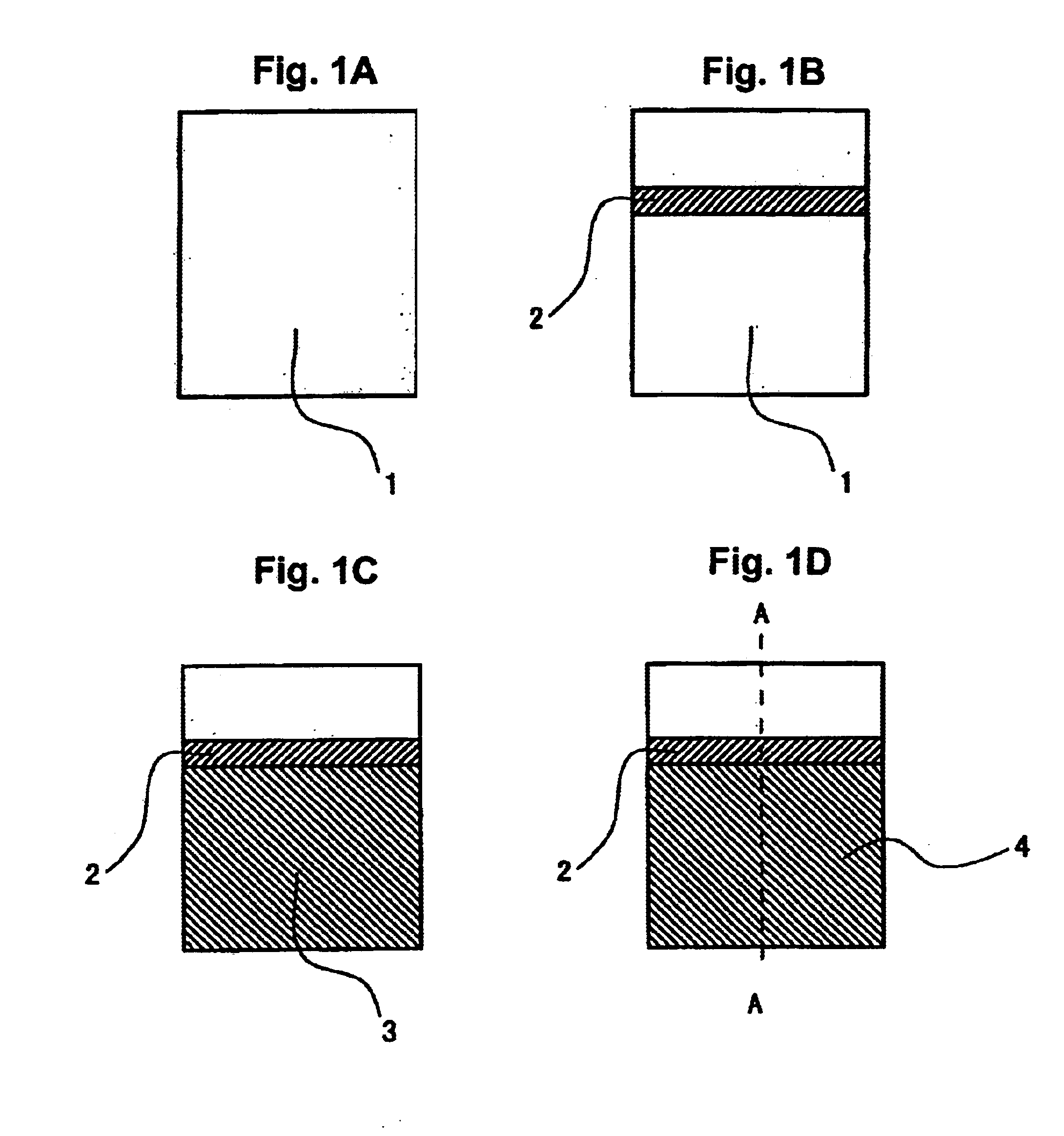Solid electrolytic capacitor and method for producing the same
a technology of electrolytic capacitor and solid electrolytic capacitor, which is applied in the manufacture of electrolytic capacitors, capacitor electrodes, electrolytic capacitors, etc., can solve the problems of increasing production costs, and affecting the stability of the capacitor so as to achieve stability and stability. stability over a long period of tim
- Summary
- Abstract
- Description
- Claims
- Application Information
AI Technical Summary
Benefits of technology
Problems solved by technology
Method used
Image
Examples
example 1
Masking Step
[0129]A 100 μm-thick formed aluminum foil cut (slit) into a width of 3 mm was cut into strips each having a length of 13 mm. One short side part of a foil strip was fixed to a metal-made guide by welding. A polyimide resin solution (UPICOAT™ FS-100L, produced by Ube Industries, Ltd.) adjusted to a viscosity of 800 cp was supplied to a disk-like coating apparatus having a 0.4 mm-width coating surface and while press-contacting the coating surface of the coating apparatus onto the aluminum formed foil, a 0.8 mm-width line was drawn by the solution on the portion 7 mm inside from the unfixed end. The solution was then dried at about 180° C. to form a masking layer (polyimide film).
Electrochemical Forming Step
[0130]The aluminum foil fixed to a metal-made guide was disengaged from the coating apparatus. Thereafter, the area from the distal end to the masking line of the aluminum foil was dipped in an aqueous ammonium adipate solution and a voltage of 13 V was applied to elect...
example 2
[0141]Chip-type solid electrolytic capacitors were manufactured in the same manner as in Example 1 except for using a polyimide resin solution (RIKACOAT™, produced by Shin Nippon Rika K. K.) as the masking material. The measurement of leakage current and the reflow soldering test were also performed in the same manner. The results obtained are shown in Table 1.
example 3
[0142]Chip-type solid electrolytic capacitors were manufactured in the same manner as in Example 1 except that the oxidative polymerization in the step of forming a solid electrolyte was performed by dipping the aluminum foil in an aqueous solution prepared by further adding sodium 2-anthraquinonesulfonate (produced by Tokyo Chemical Industry Co.) to Solution 2 to have a concentration of 0.07 wt %. The measurement of leakage current and the reflow soldering test were also performed in the same manner. The results obtained are shown in Table 1.
PUM
| Property | Measurement | Unit |
|---|---|---|
| thickness | aaaaa | aaaaa |
| thickness | aaaaa | aaaaa |
| length | aaaaa | aaaaa |
Abstract
Description
Claims
Application Information
 Login to View More
Login to View More - R&D
- Intellectual Property
- Life Sciences
- Materials
- Tech Scout
- Unparalleled Data Quality
- Higher Quality Content
- 60% Fewer Hallucinations
Browse by: Latest US Patents, China's latest patents, Technical Efficacy Thesaurus, Application Domain, Technology Topic, Popular Technical Reports.
© 2025 PatSnap. All rights reserved.Legal|Privacy policy|Modern Slavery Act Transparency Statement|Sitemap|About US| Contact US: help@patsnap.com



